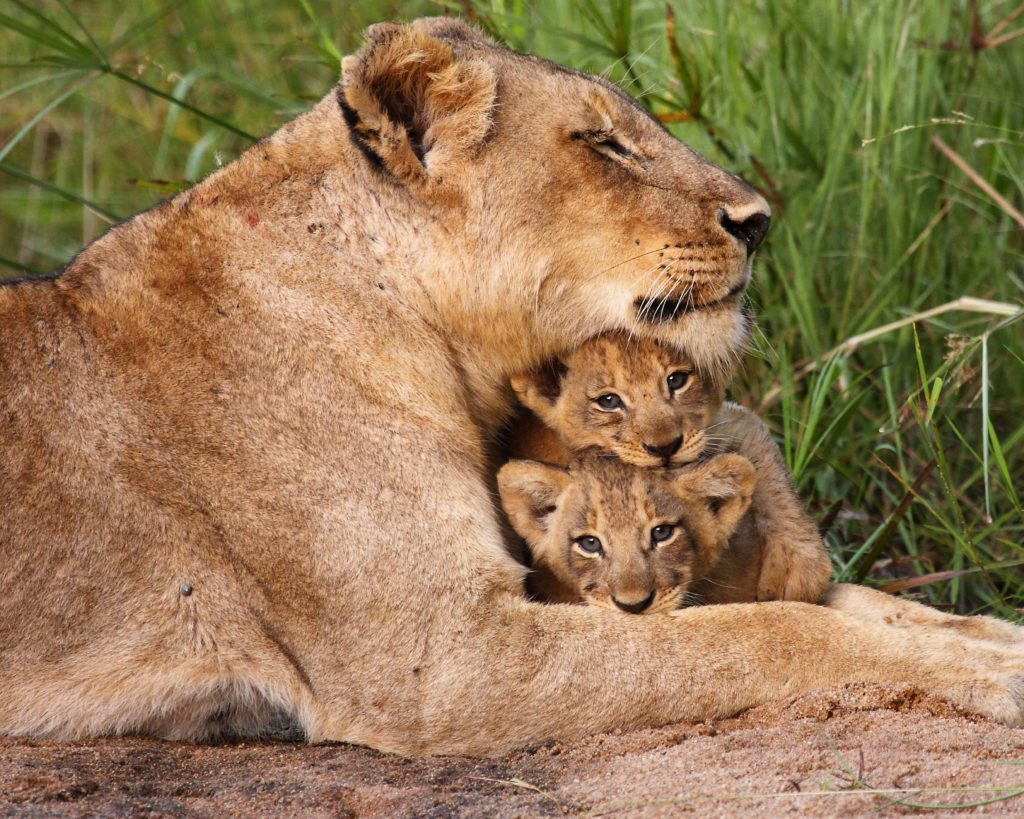
Marnus Roodbol, Lion Conservation Field Officer, EWT Carnivore Conservation Programme
The African Lion is an iconic species that represents strength and courage to many cultures around the globe. As a flagship and umbrella species, protecting Lions also protects the millions of animals that share their habitat. Despite their importance as apex predators and cultural significance, they are under threat. An estimated 200,000 lions once roamed across the African continent. Over the last hundred years, Lions have disappeared from 95% of their historic range. This has coincided with a severe decline in population. Only 23,000–39,000 mature individuals remained in Africa in 2015, and some estimates suggest that there may currently be as few as 20,000 individuals remaining. The main cause of this catastrophic decline is the loss of Lion habitat and prey caused by human expansion. Lions pose a risk to human livelihoods, particularly livestock farming, and to human life. This has caused people to kill lions and other predators in retaliation for the loss of property or out of fear. The historical landscapes once belonging to lions have swiftly disappeared into agricultural spaces, which brings forth new human-related conflict issues.
One of the most effective, and most destructive, methods used to kill lions and other predators is poison. Pesticides such as Temik and carbofuran are freely available in local agricultural stores. They are used in across Africa to combat bacterial, fungal, and insect infestations in their crops. These pesticides don’t only kill insects. When carnivores kill livestock, farmers lace the livestock carcass with these poisons. While this is often highly effective in killing the offending Lion, it also kills large numbers of scavengers, including Leopards, hyaenas, jackals, and vultures. The impact on vultures and other raptors is particularly severe. According to records maintained by the EWT’s Vultures for Africa Programme, more than 1,200 vultures were poisoned across southern and East Africa in 2019. In late February 2020, more than 1,000 vultures, mostly the Endangered Hooded Vulture, died in a mass poisoning incident in Guinea-Bissau.
Wild Lion populations have faced numerous challenges during the last two decades. In addition to conflict with humans, Lion body parts have been used for centuries across the African continent to capture the strength and courage of the mighty Lion and cure various human bodily ailments. However, the trade of body parts in east and southern Africa was not as frequent before demand from Asia infiltrated into the local market, thus fuelling the demand and exposing free roaming populations to an increased threat of poaching for body parts. It is believed that this new demand originated as an offshoot of the tiger bone industry in Asia. As tiger populations dwindled, demand for a substitute species increased. The targeted poaching of Lions for their body parts is now on the rise as wildlife markets try to meet the demand for Lion parts from a growing human population in Africa and in the relatively new Asian markets. The pragmatic requirements of survival in rural communities that live in Lion range interact with traditional mythological and ceremonial perceptions of Lions. The desire to protect property and human life, to supplement meagre incomes, and for a rapidly growing population to participate in ancient traditions that use Lion body parts fuel the looming threat of widespread poisoning of Lions and severe impacts on entire ecosystems.
The Great Limpopo Transfrontier Conservation Area (GLTFCA), which includes Kruger National Park, in South Africa, and Limpopo National Park, in Mozambique, is one of the last ten Lion strongholds in Africa. These strongholds occur in formally protected areas and contain a stable or increasing population of at least 500 Lions. Impoverished pastoral communities along the boundaries of this conservation area resort to illegally killing Lions both in retaliation for livestock losses and for the potential income they can earn by selling their body parts. Protecting this population of Lions requires a multi-pronged approach. We have partnered with Peace Parks Foundation (PPF) in Mozambique to address the targeted poisoning of Lions. We will monitor Lion prides across the landscape using GPS satellite collars. By understanding their movements and habitat use, we can inform anti-poaching patrols to better protect areas that are important to these prides. Through our Vultures for Africa Programme, we will also provide Poison Intervention Training for rangers in both South Africa and Mozambique so that first responders are equipped to safely protect evidence and decontaminate sites to reduce the impact of the poison on the ecosystem. Our Wildlife in Trade Programme will provide training to Mozambican customs officials that will enable them to identify the parts of Lions and other priority species and to distinguish them from similar legally graded species. Through PPF and their Herding 4 Health Programme, we will work with local communities to provide an early warning system when collared Lions approach communities. Finally, we are working with Freeland to identify and disrupt Illegal Wildlife Trade routes used to get Lion parts to both local and Asian markets. Protecting this critical and threatened Lion population requires evidence-based and culturally sensitive solutions. Over the next three years, we will work with our partners to develop these solutions and to stop targeted Lion poisoning in the GLTFCA.
This work is funded by the UK Government through the Illegal Wildlife Trade Challenge Fund.



